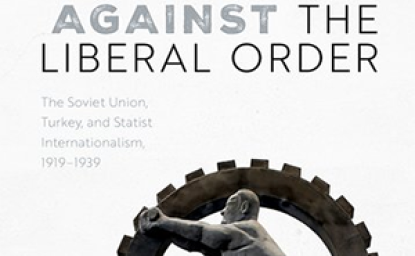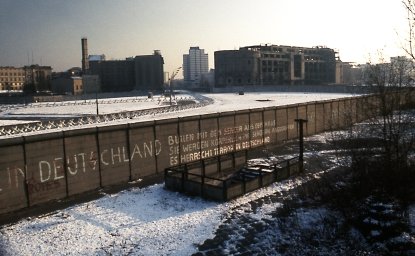Viet Minh Seeks Support from Soviets


CWIHP e-Dossier No. 36
Report of Pham No Mach [Pham Ngoc Thach] to the Soviet Envoy in Switzerland, A. G. Kulazhenkov
[Click to read in CWIHP's online Digital Archive]
Source: Russian State Archive for Social and Political History (RGASPI), collection 17 (Central Committee), inventory 128, item 404. This copy of the document was sent to the Central Committee by the First European Section of the Ministry of Foreign Affairs on 20 September 1947. Translated for CWIHP by Sophie Quinn-Judge.
Introduction
The following 1947 report to Moscow from a Soviet envoy in Bern, Switzerland records an unexpected meeting with an emissary of the Viet Minh government. The Viet Minh were clearly desperate for diplomatic and material support from former allies, including the French Communist Party (FCP) and the USSR. This Viet Minh envoy had made a risky trip across the French border to meet with FCP leaders Maurice Thorez and Jacques Duclos before walking into the Soviet mission. He was travelling on a false passport in the name of Lin-tay, posing as a Chinese businessman who had come to Switzerland to treat his tuberculosis. He was likely to have been Dr. Pham Ngoc Thach,[1] a specialist in the treatment of TB who had become an important figure in nationalist politics in 1945, when he formed a youth movement in Saigon that became involved in the August takeover of power from the defeated Japanese. He had probably been a member of the FCP when he studied in France, but this has never been established with any certainty. In April and May 1947, as a deputy minister in the office of the DRV President, Ho Chi Minh, he made contact with US diplomats in Thailand, including the assistant military attaché mentioned in the report.[2] The Americans handled these approaches cautiously, and as the report points out, they declined to offer any direct support to the DRV. It is reasonable to believe that Pham Ngoc Thach then traveled on to Europe. He also claims to have stopped in Singapore.
What is most striking about his report to the Soviets is its defensive nature. The envoy goes to great lengths, for example, to justify the Viet Minh decision to disband the Indochinese Communist Party (ICP) in 1945. He is keen to prove to the Soviets that the Vietnamese communists are a strong and influential force within Vietnam, just the opposite of the message he had conveyed to the Americans. Any figures he cites thus need to be taken with a grain of salt, as he was trying hard to convince the Soviet Union that the Vietnamese communists were worthy of support. He was also eager for an invitation to Moscow to have more direct contact with decision makers. As the envoy is identified as a representative of the secretariat of the “President of the Council of Ministers of the Republic of Vietnam,” we can identify him as a direct emissary from Ho Chi Minh. At this juncture Ho’s earlier conciliatory attitude towards France was already being criticized within the ICP, and he may have known that the US Communist Party leader Earl Browder had been forced from power for the sin of having disbanded his party during WWII. In the end, Ho’s leadership would not be endorsed by the Soviet party until he made his trip to Moscow early in 1950, in the entourage of Mao Zedong. The Soviets finally recognized the DRV at the end of January 1950.
The first half of 1947 was a time of rapid change in the international arena, as well as for the independence movements of Southeast Asia. In March 1947 US President Harry Truman laid out his plans to fight communism in Greece and Turkey, which became known as the Truman Doctrine. In June Washington announced the Marshall Plan for aid to rebuild Europe. Then in September Zhdanov articulated the hardening in Soviet thinking on the post-war world in his speech on the “two camps” at the inaugural conference of the Cominform in Poland. Soviet policy was primarily designed for Europe, but the trend towards polarization had immediate repercussions in East Asia.
There were regional events that may have had a bearing on this trip to Bern as well. In 1947, having been driven out of Hanoi and Saigon by the French, without diplomatic recognition from any Western power or the Soviet Union, the Viet Minh relied heavily on contacts within Southeast Asia for communications with the outside world. Bangkok, as Christopher Goscha has shown, was an important diplomatic contact point until the November 1947 coup, which eventually led to Phibun Songkhram’s return to power.[3] The Vietnamese were also in touch with the Malayan Communist Party (MCP), which until early 1947 had maintained good relations with the British and carried out a united front policy to work non-violently for national independence.[4]
But in March 1947 the charismatic leader of the MCP, Loi Tek (Lai Teck), suddenly disappeared prior to a special party meeting to examine suspicions that he had been working for the British. He took with him the party’s funds and a detailed knowledge of its structures, probably including much information about contacts with regional parties. (It later became known that he had also cooperated with the Japanese in Singapore during their occupation). One result of Loi Tek’s unmasking was that the new MCP leader Chin Peng came under pressure to repudiate his predecessor’s more moderate policies, and the party therefore moved towards a phase of violent militancy.[5]
The end of Loi Tek’s undercover career almost certainly had larger repercussions for Southeast Asia. His collaboration with the British could now be portrayed as a betrayal of the party’s interests and used to cast doubt on other Southeast Asian communists who had attempted to maintain peaceful relations with the West from 1945-47. This guilt by association could have been damaging for Ho Chi Minh; in fact there were two members of his government who had been trained by the British Special Operations Executive Force 136 before being parachuted back to the Vietnamese maquis at the end of World War II.[6] But what really complicated the situation was that Loi Tek had come to Malaya around 1934 as a member of the Indochinese Communist Party (ICP) and could claim to have known Ho Chi Minh in China.[7] Judging by a number of overlaps in the biography of Loi Tek provided by British sources, and the biography of a Vietnamese communist arrested by the French in 1933, we can guess that Loi Tek was first known to the French as Truong Phuoc Dat.[8] He had been assigned to propaganda work among Vietnamese sailors in Shanghai in the early 1930s by Ho Chi Minh, after escaping from a military prison in Saigon. In 1933 he had already been responsible for sowing suspicion between the Chinese Party in Shanghai and Vietnamese activists trying to re-establish their own party. He was suspected of having betrayed two of them to the French. One of these was Tran Ngoc Danh, who from 1945-1948 was the DRV representative in Paris, and was one of the Vietnamese communists who became most vociferous in criticizing what he called Ho’s “opportunist and nationalist line” in 1948-50, including the dissolution of the ICP.[9] We can guess that Tran Ngoc Danh’s animus towards Ho was increased by the unmasking of Loi Tek, even though Ho had had no part in infiltrating him into the Malayan Party.
To sum up, one needs to read the following document with an awareness of the diplomatic difficulties in which the Viet Minh found themselves in September 1947. One can hazard a guess that Ho Chi Minh was eager to send someone to Moscow to report on the situation in Southeast Asia post-Loi Tek, in order to get across his side of the story.
Footnotes
[1] The Russians recorded his name as “Pham No Mach,” but confusion between a Russian M and T could at least partially explain that.
[2] Mark Philip Bradley, Imagining Vietnam and America: The Making of Postcolonial Vietnam, 1919-1950, (Chapel Hill: Univ. of North Carolina Press, 2000): 149.
[3] Christopher E. Goscha, Le contexte asiatique de la guerre franco-vietnamienne: Réseaux, relations et économie, Thèse de doctorat d’histoire de l’Ecole Pratique des Hautes Etudes, November 2000, III., ch. 1, pp. 468-518.
[4] Ibid., 490, n.61.
[5] See, for example, Phillip Deery, “Malaya, 1948: Britain’s ‘Asian Cold War’?”, Working Paper 3, The Cold War as Global Conflict, International Center for Advanced Studies, New York University, April 2002.
[6] These were Phan Boi (aka Hoang Huu Nam) and Le Gian, both of whom had been trained in intelligence work by the British in India, after being liberated from French captivity on an island near Réunion. Cong Thanh (ed.), Phan Boi – Hoang Huu Nam: Nha tri thuc cach mang, nguoi cong su tin cay cua Bac Ho [Phan Boi – Hoang Huu Nam: A Revolutionary Intellectual and Trusted Colleague of Ho Chi Minh] (Danang: NXB Danang, 2003): 62, 127-131.
[7] Descriptions of Loi Tek’s early career from British sources, as described by Yoji Akashi in his article “Lai Teck, Secretary General of the Malayan Communist Party, 1939-1947,” Journal of the South Seas Society, Vol. 49, 1994, pp. 57-103.
[8] The above mentioned article states that Loi Tek was engaged in communist activities in Shanghai in the early 30s and had been designated for study in Moscow, but had been arrested on the Manchurian border and unable to continue his travels (p. 63). The statement to the Surété of a Truong Phuoc Dat matches many elements in this biography, although a number of dates are off by a few years. The pseudonym Ly Minh Son is also given in both of these bios as one used by Loi Tek and Truong Phuoc Dat in China. The cynical attitude shown by Loi Tek as described by Akashi is also uncannily similar to that which Truong Phuoc Dat ascribes to himself in his confession. Archives d’Outre-Mer, Service de Protection du Corps Expeditionnaire 367, Déclarations faites par Truong Phuoc Dat à la Surété Génerale les 22 mai 1933 et jours suivants.
[9] Sophie Quinn-Judge, Ho Chi Minh : The Missing Years, (Berkeley: Univ. of California Press, 2002): 253-5.
This e-Dossier has been made possible by generous support from the Blavatnik Family Foundation.
Author

Cold War International History Project
The Cold War International History Project supports the full and prompt release of historical materials by governments on all sides of the Cold War. Read more




